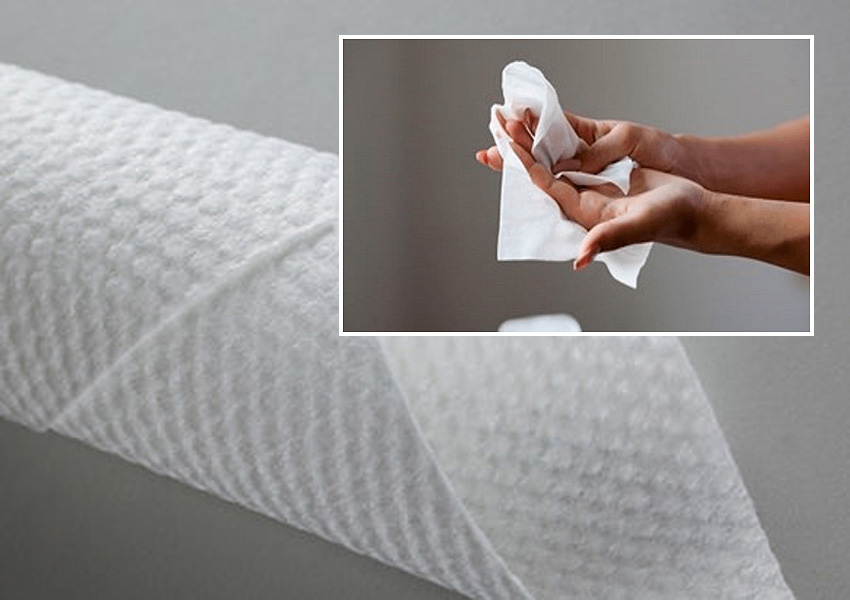Publications
Last
Advertisement
Partners


Fluffed pulp market until 2027

According to a new Smithers report, record prices and a recovery in demand after the pandemic will push global consumption of fluffed pulp to 6.9 million metric tons this year.
The fluffed pulp industry is expecting a boom in 2022, when record prices and a recovery in demand will push global consumption to 6.9 million metric tons of fluffed air-dried pulp. The market value will increase to $8.31 billion compared to $6.88 billion in 2021, according to an exclusive forecast in a new market study "The future of fluffed pulp until 2027" from Smithers.
At the beginning of the year, the price of fluffed pulp approached 2 thousand US dollars per ton of air-dried pulp, which is almost two to four times higher than its historical average. Demand was stimulated by the recovery of the global economy after Covid and reinforced by the call for the use of more environmentally friendly materials for hygienic purposes (diapers, baby hygiene items, products used for adult incontinence and feminine hygiene products) and nonwovens - especially napkins.
In a special analysis by Smithers, this segment is considered in the context of the current year and its longer-term prospects until 2027 with a specific analysis of current and future demand, capacity and investment in plants for the production of fluffed pulp, as well as competing technologies.
Despite a slight increase in production capacity in South America over the past five years, the global supply of fluffed pulp remains limited in 2022, even though demand continues to grow. Variable production — switching factories from the production of viscose or paper pulp to the production of fluffed pulp— will be of key importance in the short and medium term to meet customer needs.
The total global consumption of fluffed pulp will increase to 8.13 million tons by 2027, which is equivalent to a cumulative annual growth rate (CAGR) of 3.4% for 2022-2027. The market will not be able to maintain the record prices observed in the first half of 2022, but will remain optimistic. Smithers predicts that the global value will reach $8.63 billion in 2027, as prices and supply will be adjusted to historical norms.
North America is a key producer of fluffed pulp. In 2022, it is the only region of the world that is a "pure" exporter, although South America is expected to join it soon. New demand in 2022–2027 will mainly come from Asia, where consumption of about 2.9 million tons of pulp worth $3 billion is expected in 2022. During 2022, it is also planned to create its own domestic industry for the production of fluffed pulp in Asia.
Giving high absorbent properties to disposable hygiene products remains the main application of fluffed cellulose. Consequently, the use of fluffed pulp will track the demand for hygiene items and other nonwovens in the post-pandemic economy. In North America and Western Europe, these consumer segments are relatively mature and face certain challenges that will change the consumption pattern of fluffed pulp. Hygiene products will account for almost 90% of global volumes in 2022, but changes and innovations in the design of hygiene products will mean that the growth in pulp consumption will be virtually unchanged until 2027. Such innovations include increased sales of diapers that use fewer or no fluffed cellulose in their absorbent designs.
It is expected that the growth will be much more noticeable in applications such as non-woven substrates, especially in structures manufactured using airlaid technology. This is confirmed by the global trend towards the rejection of plastic and plastic waste, especially in the napkin segment. Fluffed cellulose is one of the most stable types of raw materials in the range of nonwovens. Napkins may contain 80-85% fluffed cellulose, and this figure may increase to 90% for other products, such as disposable tablecloths used in public catering infrastructure. The R&D departments of most of the leading nonwovens manufacturers are currently focused on developing biodegradable airlaid products without plastic binders or binding fibers. There are also small but rapidly growing opportunities for the use of fluffed cellulose in nonwovens produced using the "spunlace" technology.
Softwood will remain the main raw material used for the production of fluffed pulp. Gradually, other tree species will be used for its production, including some varieties of eucalyptus from South America, and fluffed cellulose obtained from reconstituted/recycled sources will be used in limited quantities.
In a new report, "The Future of Fluffed Pulp through 2027," Smithers thoroughly and critically explores the historical, current and future fluffed pulp market worldwide.: https://www.smithers.com/services/market-reports/nonwovens/the-future-of-fluff-pulp-to-2027













